Thank goodness for this butcher block. Without it, we would have zero counter space (city apartments are just not made for cooking). Now I understand why people use their ovens for storage.
A few years back while living in Chicago, we rented a van and drove to Effingham, Illinois, a remote, little town where Boos Blocks are made. John Boos & Co. has been in business since 1887 and does solid work, and is literally located in the middle of Effing-nowhere — about a three-hour dive from Chicago. Nevertheless, it’s substantially less expensive if you pick up the block in Effingham. This one weighs 400 pounds, so I can’t begin to imagine the shipping cost.
The people at Boos were so kind as to load the butcher block into the van. And then we went merrily on our way, making the journey back to our apartment in Chicago. We asked a friend to meet us at our apartment to help move the block. The three of us (none of us muscular by any means), were able to unload the block from the van, but no farther. It wouldn’t budge. We just looked at each other dumbfounded. It’s 400 pounds. What were we thinking? Hmm, what now??
We had recently moved into our apartment in the West Loop neighborhood and had yet to meet any neighbors. As we stared at the block, which was resting comfortably in the middle of the parking lot, our upstairs neighbors (two, somewhat burly, 20-something guys [our friendly yet loud upstairs neighbors]) pulled into the lot. Perhaps owing to Midwestern kindness (or pity), they offered to help move the block in exchange for a few beers.
Despite the logistics, this butcher block is one of the best purchases we ever made.
Okay, now let’s talk kimchi….
I suppose there’s no need to make kimchi when you can buy it just about anywhere these days. But, I also think there’s satisfaction in taking charge in the kitchen and doing things yourself.
I first discovered kimchi in college (way back in the 90s) from my (Korean-American) roommate at the time. Kimchi was my introduction to Korean food and, well, foods other than what I had grown up eating (i.e., typical ‘American’ processed food). That was one of the first food experiences that piqued my curiosity. But it wasn’t until several years later that I began to realize that there was a world of food out there. Haven’t looked back since. Perhaps I’m just making up for lost time.
For some, kimchi, with its bold, assertive flavors, is an acquired taste. More often than not, it will hook you from the first bite. I love it. Basically, Korean sauerkraut (fermented cabbage) with an added kick from the hot pepper flakes (gochugaru).
I usually grab some kimchi at the Asian megamart, H-Mart. However, I came across this wonderful Korean cooking blog and can now make all the kimchi my heart [and stomach] desires. Thanks Maangchi!
What can you do with kimchi???
Kimchi pancakes (with squid), like these…
Kimchi soup…
Kimchi fried rice…
Or, kimchi dumplings, kimchi in tacos, kimchi omelette, etc.
Or, just enjoy on it’s own (you get the most probiotic benefits when you eat kimchi raw).
The key ingredient for making kimchi are these Korean red pepper flakes. I bought mine at H-Mart, but you can also order on Amazon.
Maewoon gochugaru = spicy; Deolmaewoon gochugaruless = less spicy.
Historically, kimchi was made in late-fall and buried in earthen jars to preserve it during the winter. However, with modern conveniences, this is no longer necessary. According to the Official Site of Korea Tourism: “Kimchi is best when fermented 2-3 weeks at 35-45F (2-7C); its taste and nutritional value peak during this time.” Kimchi will slowly ferment in your refrigerator, but if you want a more sour kimchi you can leave it out at room temperature for a few days before refrigerating it.
Maangchi writes, “I usually put all my kimchi in the fridge except for a little bit in a small container. The kimchi in the fridge ferments slowly and stays fresh, while the smaller container ferments faster and gets sour. I use this sour kimchi for making things like kimchi chigae (kimchi stew) where sour kimchi is better. Then, when the small container is empty, I fill it up again with kimchi from the big container. One or 2 days later, open the lid of the kimchi container. You may see some bubbles with lots of liquids, or maybe sour smells. That means it’s already being fermented.”
Cabbage and Baby Bok Choy Kimchi
Used a combination of baby bok choy and Nappa cabbage (but you can do all cabbage)
Recipe is oh so slightly tweaked from here
4 pounds of Napa cabbage
2 pounds of baby bok choy
1/2 cup salt
1/4 cup sweet rice four plus 1 1/2 cups water
1 1/2 tablespoons sugar
1/2 cup fish sauce
1 1/4 cups Korean red chile flakes (gochugaru), more or less depending on spice preference
1/2 cup whole garlic cloves, roughly chopped
2-4 teaspoons ginger, minced
1/2 cup onion, chopped
6 green onions (scallions), 1-inch pieces, diagonally sliced
1 cup julienned radish
1/4 cup julienned carrot
Trim the discolored outer leaves of the cabbage. Cut the cabbage lengthwise into quarters and remove the cores. Chop the cabbage into roughly 3-inch pieces. Separate the leaves of the bok choy.
Soak the pieces of cabbage in cold water, drain, and place the soaked cabbage into a large bowl. Repeat with the baby bok choy. Sprinkle with salt, making sure all leaves are covered.
Every 30 minutes, turn the cabbage and bok choy over to salt evenly (total salting time will be 1½ hours). After 1½ hours, rinse the cabbage and bok choy in cold water three times to clean it thoroughly. Drain the cabbage and set aside (a salad spinner comes in handy for this).
Combine the rice flour and water in a small pot and mix well. Bring to a boil. Stir until the mixture begins to simmer, about 5 minutes. Add the sugar and stir a few more minutes until it becomes translucent. Let cool completely (you can place in a cold water bath to help it cool more quickly). Transfer the paste to a large bowl.
Place the garlic, ginger, and onion in a food processor, and process until smooth. Add to the bowl with the paste. Add the fish sauce and hot pepper flakes. Add the scallion, julienned radish and carrot, and mix well.
Add 2/3 off the mixture to the cabbage and 1/3 to the bok choy. With your hands, mix well, so that all the leaves are coated with the mixture.
Put the kimchi into an air-tight sealed container(s) or glass jar(s).
You can refrigerate right away and let the kimchi slowly ferment. If you prefer a more sour kimchi (perhaps, for soups and stews), you can leave a little bit at room temperature (it will ferment faster at room temperature).
How do you know if your kimchi is fermented? After one or two days, open the kimchi container. You may see bubbles with lots of liquid and a slight sour smell. That means it’s already fermented.
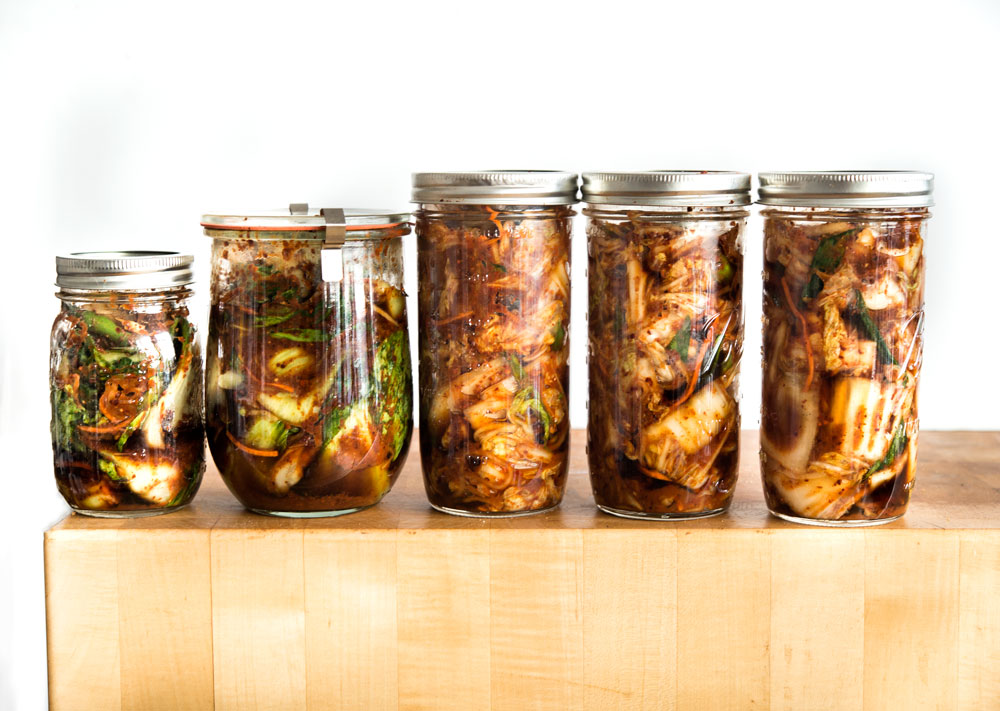







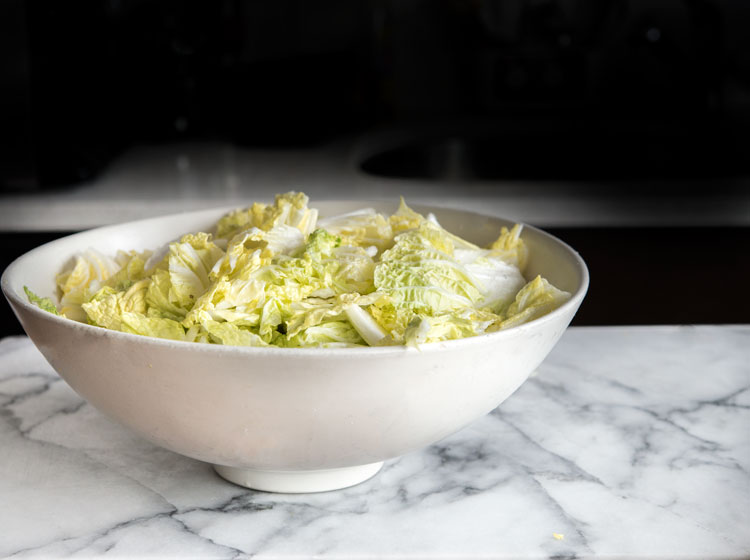




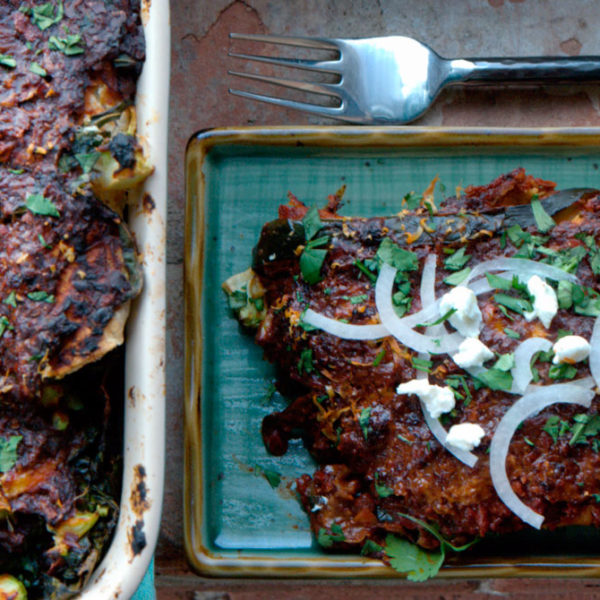
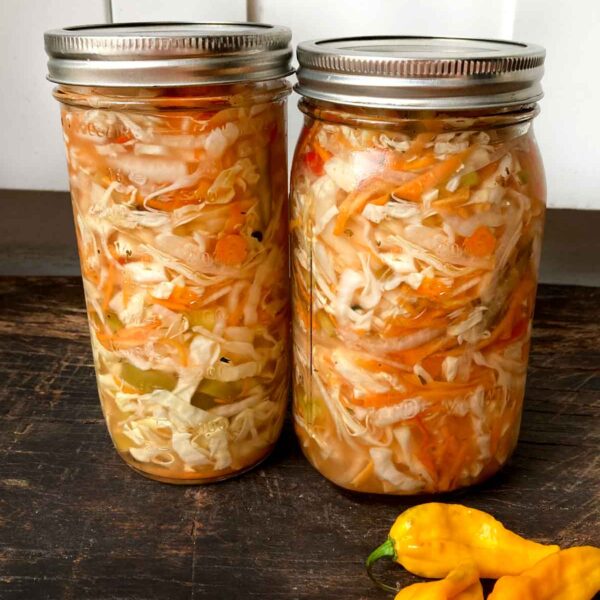
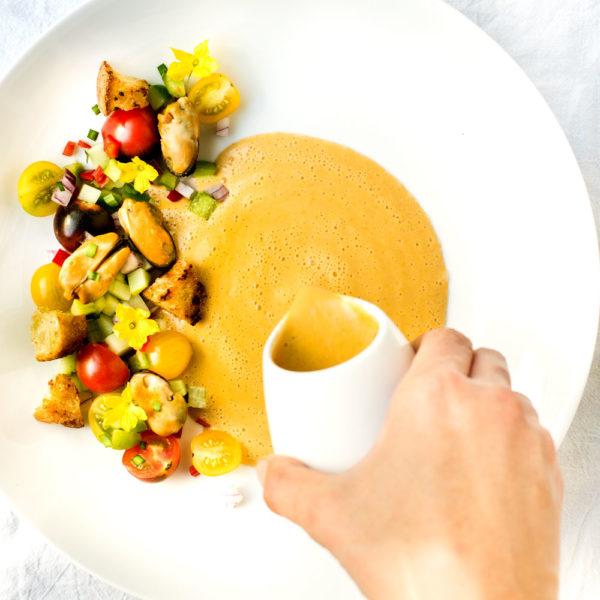


6 comments
speakfreely
I love the idea of using baby bok choy for kimchi. Why? because I remember in one of the Korean cookbooks on my shelf, the author says that whole cabbage kimchi is considered better, or more formal than chopped cabbage kimchi, and that she would never, for instance, serve the chopped kimchi to her grandparents. I used to make only chopped kimchi, because stuffing the cabbage seemed like too much trouble, but the fact that floating vegetables in lactofermentation crocks become islands of mold, made me re-think this practice. When I tried the whole cabbage kimchi, I was really surprised at how much better it was, and how much longer it lasted in the crock. So now, I ferment half cabbages in the cold cellar, and chop it when I pull some out of the big crock to transfer to a jar in the refrigerator. If I lived in a house with lots of kimchi eaters, the sliced half cabbage would be a nice presentation, but I'm the only one who eats it, so those adorable baby bok choys might be the solution, if they ferment as nicely as napa cabbage does.
speakfreely
I love the idea of using baby bok choy for kimchi. Why? because I remember in one of the Korean cookbooks on my shelf, the author says that whole cabbage kimchi is considered better, or more formal than chopped cabbage kimchi, and that she would never, for instance, serve the chopped kimchi to her grandparents. I used to make only chopped kimchi, because stuffing the cabbage seemed like too much trouble, but the fact that floating vegetables in lactofermentation crocks become islands of mold, made me re-think this practice. When I tried the whole cabbage kimchi, I was really surprised at how much better it was, and how much longer it lasted in the crock. So now, I ferment half cabbages in the cold cellar, and chop it when I pull some out of the big crock to transfer to a jar in the refrigerator. If I lived in a house with lots of kimchi eaters, the sliced half cabbage would be a nice presentation, but I'm the only one who eats it, so those adorable baby bok choys might be the solution, if they ferment as nicely as napa cabbage does.
Maggie
So I just made this recipe. I put it in an all glass mason jar with a metal clasp glass lid I tried my best to fill it to the top but there’s micro space at the top is this okay? Also do I just leave it on the counter? I used red cabbage and baby bok choy with red onion will The Red Onion be okay?
wildgreensandsardines@gmail.com
I leave it at room temperature for a few days until it starts to bubble. Then I refrigerate it.